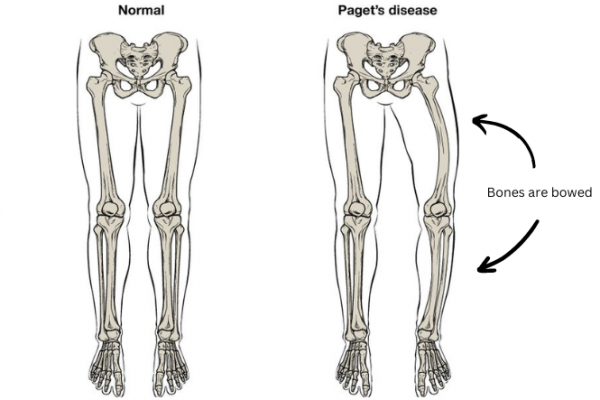Wishing everyone happy holidays and a joyful New Year from the Healthify team. Don't forget to Slip, Slop, Slap and Wrap!
Paget's disease
Paget's disease is a chronic (long-term) condition causing bones to be enlarged and weakened. This can cause pain and aching.
Although there's currently no cure, treatment with medicines can slow the progression of the disease and ease symptoms. In some cases, surgery may be needed, but this is rare.

Many people with Paget’s disease don’t have any symptoms and the condition is only found when tests are carried out for another reason.
For people who do get symptoms, bone pain is most common. This type of pain is usually described as a dull, continuous pain deep within the affected part of the body. It is often worse with rest and at night. The area may also feel warm.
Pain in the joints may occur when abnormal bone growth causes arthritis in the joint. Some people also get numbness and tingling, shooting pains and balance problems because of bone growth squashing a nerve.
Other symptoms include:
- enlarged or misshapen bones
- bowed legs
- problems with hearing
- headaches
- bones that break easily.

Image credit: Anatomy & Physiology, Connexions Web site (text added)
Similar to skin, bone is a living tissue that is constantly being broken down and rebuilt – a process called "bone remodelling". When bones are affected by Paget's disease something has gone wrong with the remodelling process meaning that the bones are not broken down and rebuilt properly. This causes weak bones which may be deformed, overgrown, bowed or prone to breaking easily.
Paget's disease can occur in any bone in the body and often occurs in more than one. The bones most often involved include the pelvis, spine, skull and the long bones in the arms and legs.
Diagnosis
To diagnose Paget's disease, a blood test is used to check the level of an enzyme called alkaline phosphatase (ALP). The level of ALP is often raised in a person with Paget's disease. An X-ray is taken to confirm the diagnosis. An imaging test called a scintiscan can show exactly which bones are involved.
Treatment
There's no cure for Paget’s disease, but treatment can help manage the symptoms.
- Pain relief medicines such as paracetamol(external link) or ibuprofen may help with the pain of Paget’s disease. Seek advice from your healthcare provider about the best pain relief medications for you. If these don't help, they may be able to prescribe more powerful pain relief.
- Bisphosphonates are medicines used to slow down the faulty bone remodelling process and can suppress disease activity for months or years. They are taken as oral tablets (eg, alendronate(external link) or risedronate(external link)), or an injection (eg, zoledronic acid(external link)). The tablets may cause an upset stomach, while the injected treatments may cause flu-like symptoms for 1 or 2 days.
- Surgery may be required either to help fix bone fractures or relieve arthritis(external link) by joint replacement.
There are a number of ways to help yourself if you are living with Paget’s disease. These include:
- Exercise, eg, walking, climbing stairs and lifting weights, to build strong bones and keep your joints mobile. An individualised exercise programmes will provide these benefits and also avoid damaging affected bones.
- Physiotherapy and occupational therapy.
- Contact with a support organisation, such as Arthritis NZ.(external link)
Apps reviewed by Healthify
You may find it useful to look at some Pain management apps, Falls prevention apps, and Exercise apps for older adults.
See a healthcare provider if you notice any of these symptoms:
- unusual looking bone(s)
- persistent bone or joint pain
- tingling and weakness in an arm or leg
- difficulty hearing, especially if it’s just in one ear.
Paget's disease(external link) NHS Choices, UK, 2019
Paget's disease of bone(external link) NIH Senior Health, 2019
Paget's disease of bone(external link) Mayo Clinic, US, 2021
Apps
Pain management apps
Falls prevention apps
Exercise apps for older adults
References
- Paget's disease of bone overview(external link) National Institute of Arthritis and Musculoskeletal and Skin Diseases, US, 2019
- Treatment Paget's disease of bone(external link) NHS, UK, 2019
- Paget's disease of bone(external link) Mayo Clinic, US, 2021
Credits: Healthify editorial team. Healthify is brought to you by Health Navigator Charitable Trust.
Reviewed by: Dr Mark Bolland, Endocrinologist and Associate Professor – Medical, The University of Auckland
Last reviewed:
Page last updated:





